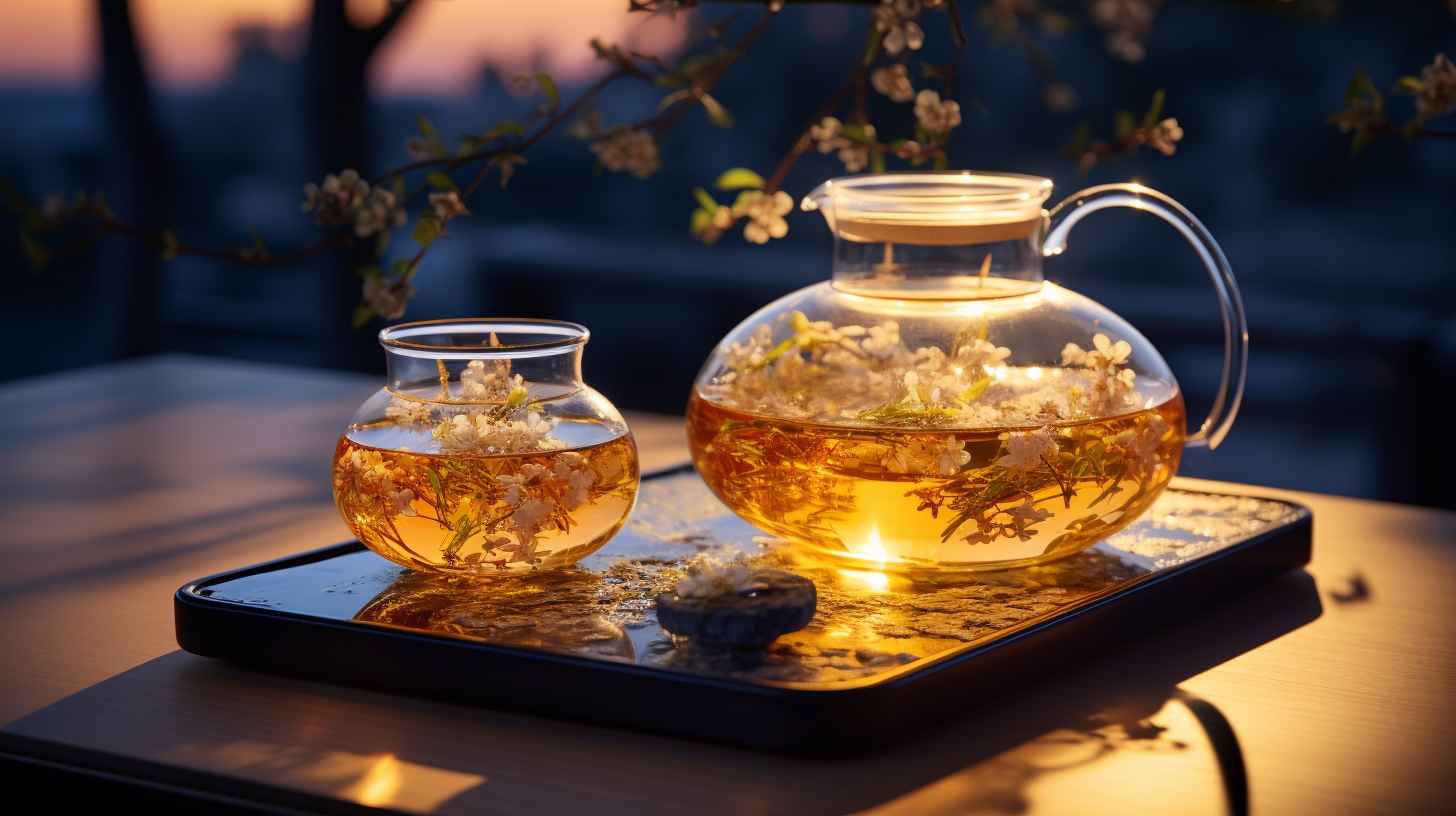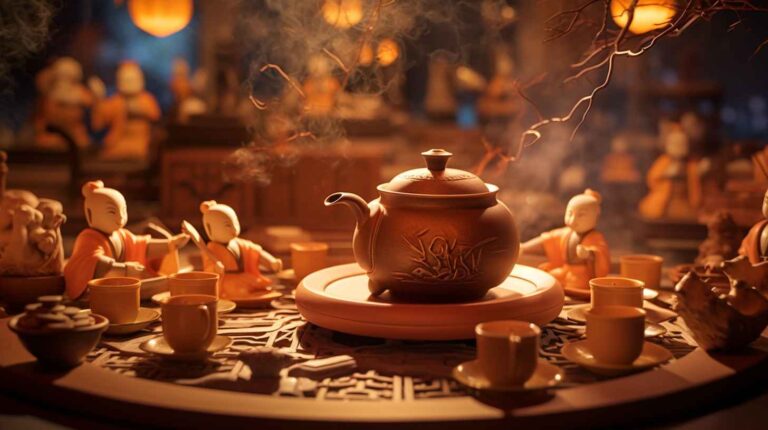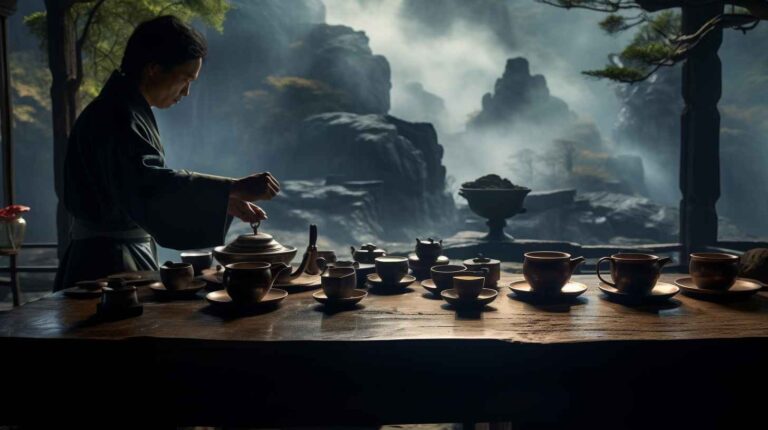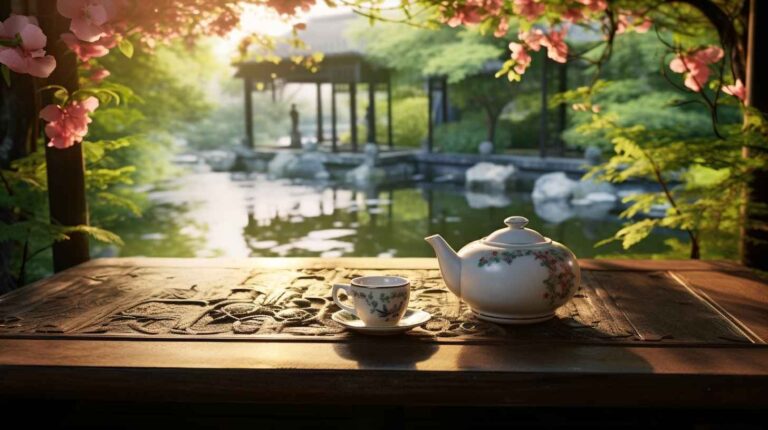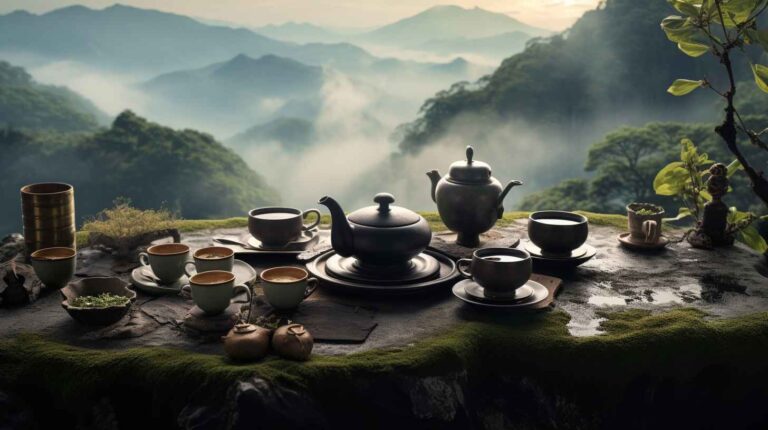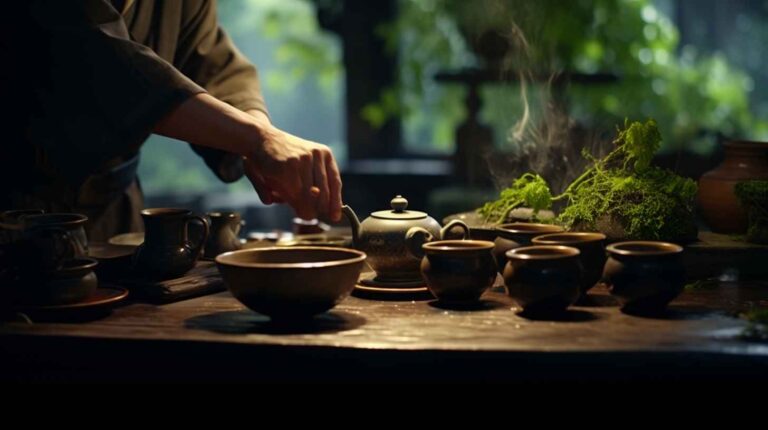Cold Brew Tea: The Chilled Path to Flavorful Refreshment
Introduction
As the temperatures rise, so does the desire for a quenching drink to cool the senses. While iced coffees and lemonades are the familiar go-to’s for many, an old player with a cool twist has been making a mark – the cold brew tea. This isn’t just your regular tea served cold, but an entirely different brewing experience that offers a nuanced flavor dance on the palate. This comprehensive guide will take you on a journey through the delightful world of cold brew tea, from its ancient origins to the modern methods of crafting that perfect glass.
The Genesis of Cold Brew Tea
To many, cold brew tea may seem like a fresh trend spawned by contemporary cafes and health gurus. However, its story begins much earlier. Ancient China is where our tale starts, where the serenity of tea was offered in its chilled form to travelers who had endured long, arduous journeys. Their experience was transformed from exhaustion to rejuvenation with just a sip.
Similarly, in Japan, as the sun bore down harshly during the summer, cold tea emerged not just as a beverage, but as a respite from the heat, turning into a seasonal essential. As the centuries rolled on and the world became a global village, trade, and cultural exchange led to an evolution in cold brewing techniques. These global influences combined and refined recipes, resulting in the plethora of cold brew tea varieties we relish today.
Understanding the Cold Brew Method
At first glance, cold brewing might seem synonymous with laziness—just throw some tea in cold water and wait. Yet, it’s a meticulous art. Unlike the hot brew method, which uses hot water as a catalyst to quickly release the flavors, cold brewing is a patient process that gently coaxes out the tea’s character over time.
1. The Science Behind the Flavor
Diving deeper into the mechanics, when tea leaves encounter hot water, they rapidly release not only their delightful aromatic compounds but also tannins – the elements responsible for the bitter and astringent notes in tea. Cold water, on the other hand, interacts differently with tea. Its gentle nature slowly extracts flavors, sidelining many of the bitter compounds. This leads to a brew that’s not just mild but has an innate sweetness to it. Consequently, there’s often no need for added sweeteners, presenting a taste that’s both clean and clear.
2. The Caffeine Content
Caffeine, while beneficial in moderation, can be a concern for many. Cold brew tea, with its gradual extraction process, often contains a reduced amount of caffeine compared to its hot counterpart. This makes it an ideal choice for those wanting to enjoy the flavor of tea late in the day without the worry of it affecting their sleep.
3. Health Benefits Galore
Cold brew isn’t just a treat for the taste buds but is also packed with health benefits. Despite its cool nature, it doesn’t lose out on the antioxidants found in hot tea. These powerful compounds are known to combat free radicals in the body, promoting overall health. Furthermore, since the reduced bitterness often eliminates the need for added sugars, it’s a drink that aligns well with health-conscious choices.
Crafting the Perfect Cold Brew Tea
Making cold brew tea is akin to crafting an artwork; it requires patience, the right tools, and a touch of creativity.
1. Choose Your Tea
The first step is selecting the right tea. While it’s true that most teas can be cold brewed, certain varieties stand out in this method. Green teas, with their grassy notes, oolongs with their balanced profiles, and delicate white teas often emerge as stars in the cold brew universe. If you’re looking for caffeine-free options, herbal teas like the vibrant hibiscus or the calming chamomile also shine when cold brewed.
2. The Tea-to-Water Ratio
Getting the proportions right is crucial. Typically, one to two tablespoons of loose leaf tea per liter of water is a good starting point. However, the beauty of cold brew lies in its flexibility. Adjusting the ratio can help you find the perfect strength that matches your preference.
3. The Steeping Process
Once your tea and cold water are combined, the magic begins. As the tea leaves dance and unfurl in the water, they begin releasing their flavors. This process, taking place in the cool confines of a refrigerator, can range from a quick two hours for some teas to a lingering 12 for others.
4. Straining and Serving
The final step is as simple as straining out the tea leaves. Pour the golden (or ruby, or amber, depending on your tea) liquid over ice, garnish if desired, and indulge in the refreshing symphony of flavors.
Exploring Flavor Combinations
One of the most delightful aspects of cold brew tea is the myriad of flavors you can introduce. The subtle nature of cold brew tea makes it an excellent base for experimentation:
- Green Tea and Cucumber: This combination is the epitome of refreshment, with the coolness of cucumber complementing the grassy notes of green tea.
- Black Tea and Orange Slices: The robust nature of black tea gets a zesty uplift with slices of fresh orange, adding a tangy vibrancy.
- Hibiscus and Fresh Berries: A union that results in a burst of flavors, the tartness of hibiscus melds seamlessly with the sweetness of berries.
- Chamomile and Lavender: For those seeking solace in a cup, this calming duo is perfect for a relaxing evening.
The Eco-friendly Aspect of Cold Brew Tea
In our increasingly environmentally-conscious world, the choices we make daily, even ones as simple as our beverage preferences, can have far-reaching implications. Cold brew tea stands tall in this regard, not only as a drink of flavor and finesse but also as a testament to eco-friendliness.
1. Energy Efficiency in Brewing
The most evident advantage of cold brew tea is its minimal energy consumption. Traditional hot tea requires boiling water, a process that often consumes significant energy, especially when large quantities are prepared. Conversely, cold brew tea sidesteps this energy demand altogether. By using ambient or refrigerated water, the carbon footprint shrinks, making it an environmentally kinder choice.
2. Waste Reduction
When making traditional hot tea, many enthusiasts often re-steep their tea leaves multiple times to extract as much flavor as possible. With cold brew tea, the prolonged steeping ensures that almost all the flavor is extracted in a single go, reducing the need for multiple infusions. This means less tea is required for the same amount of beverage, leading to decreased waste.
3. Composting and Reusing Tea Leaves
Once your cold brew tea is ready, the journey of the tea leaves doesn’t have to end. These spent leaves make excellent additions to compost piles, enriching the soil with organic matter. Moreover, they can be reused in creative ways. From adding them to garden beds as a natural insect repellent to incorporating them into homemade skincare products like face masks, the possibilities are endless.
4. Sustainable Packaging
As the popularity of cold brew tea surges, many brands have recognized the eco-conscious consumer’s needs. Biodegradable teabags, recyclable bottles, and even refill stations at cafes are becoming increasingly prevalent. It’s not just about the drink anymore; it’s about the entire experience being sustainable.
Diversifying Your Cold Brew Experience
While cold brew tea is delightful on its own, its versatile nature means it can be the foundation for various beverages.
1. Cold Brew Tea Cocktails
For those evenings when you’re in the mood for something a bit more spirited, cold brew tea can be a fantastic cocktail base. Whether it’s a cold-brewed green tea mixed with gin and a splash of tonic or a robust black tea paired with bourbon and a hint of lemon, the combinations are both endless and enticing.
2. Cold Brew Tea Lattes
Who said lattes are only for coffee? A splash of almond milk, a hint of vanilla, and your cold brew tea can transform into a creamy, dreamy beverage. Whether you prefer it sweetened or au naturel, this is a must-try variation.
3. Blending with Fruit Juices
For a non-alcoholic, refreshing twist, consider blending your cold brew tea with fruit juices. The floral notes of white tea combined with fresh apple juice or the earthiness of black tea mixed with tart cranberry juice can be a delightful midday treat.
The Global Rise of Cold Brew Tea
While its roots may lie in the ancient cultures of Asia, cold brew tea’s appeal is undeniably global. From the bustling streets of New York to the quaint cafes of Paris, this beverage has found its way into the hearts of millions. Part of its universal charm lies in its adaptability. Just as green tea takes on a sweeter note in Japan with the addition of rice (genmaicha) or the Moroccan tradition of adding mint to tea, cold brew tea, too, adopts the flavors and traditions of the places it touches.
Conclusion
Embarking on the journey of cold brew tea is not just about discovering a new beverage; it’s about immersing oneself in a world of history, culture, and flavor. Its gentle extraction process results in a drink that is nuanced, sophisticated, and deeply refreshing. Beyond its taste, it champions the cause of sustainability, making it a choice that’s good for the palate and the planet.
In today’s fast-paced world, where instant gratification is often sought, cold brew tea serves as a delightful reminder of the beauty of patience. It encourages us to slow down, to savor, and to appreciate the artistry in the simple things. As the saying goes, “Good things come to those who wait,” and in the world of beverages, cold brew tea is undoubtedly one of those good things. So, the next time you find yourself seeking refreshment, remember that sometimes the best flavors aren’t rushed; they’re gently coaxed, steeped in tradition, and served with a side of history. Cheers to the chilled path of flavorful refreshment!
